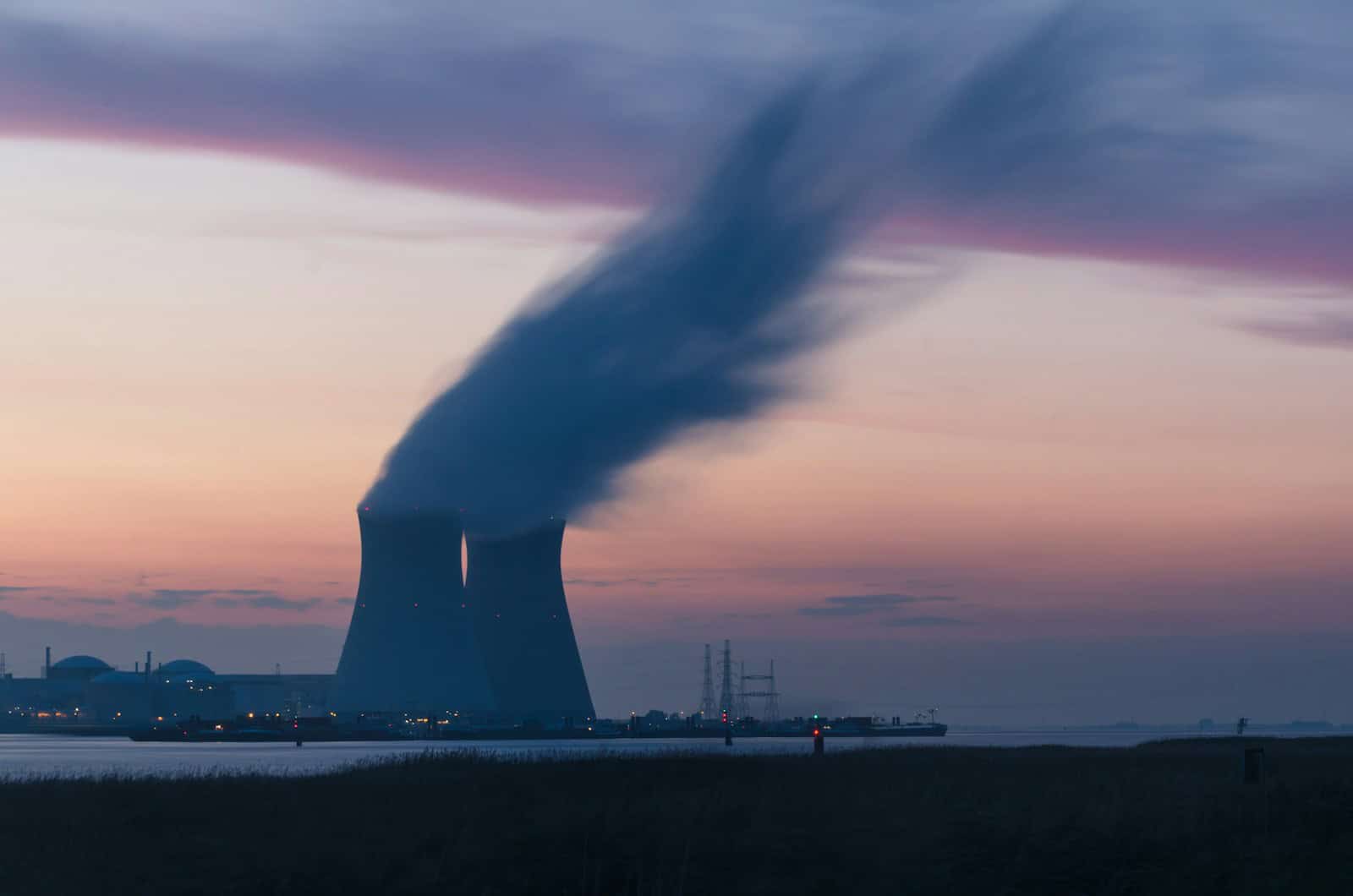It may seem surprising at first, but major tech companies like Amazon, Google, and Microsoft are increasingly turning to nuclear energy to power their large data centers. With the rapid growth of the cloud computing industry and increasing concerns about climate change, these companies are placing their bets on nuclear power as a reliable and sustainable energy source.
This unexpected trend raises questions about its driving forces and potential implications for both technology and clean energy. Amazon, along with Google and Microsoft, has made significant strides in adopting nuclear energy to ensure sustainable power sources for their expanding operations. Embracing nuclear energy could have widespread effects, stimulating investment and innovation in the nuclear sector, accelerating the shift to clean energy, and contributing to global efforts to combat climate change.
However, challenges such as public perception of nuclear safety, waste disposal, and the risk of proliferation need to be addressed in order to fully realize the potential of nuclear energy in a sustainable energy future.
Why Tech Giants Are Turning to Nuclear Energy
The increasing power requirements of cloud computing and AI processing have highlighted the fact that our current grid infrastructure may not be sufficient to meet the needs of large tech companies. As a result, major players in the industry are taking matters into their own hands. This move, while somewhat unprecedented, could be indicative of the future, with potential implications not only for computing but also for the fight against climate change and environmental goals.
Why Nuclear Energy?
Data centers consume massive amounts of electricity. As the demand for cloud services grows, so does the need for reliable and sustainable energy sources. Nuclear power offers several advantages:
- Carbon-Free: Nuclear power plants don’t produce greenhouse gas emissions, making them a crucial tool in the fight against climate change.
- Reliable: Unlike renewable sources like solar and wind, nuclear power plants can generate electricity 24/7, regardless of weather conditions. This ensures a consistent power supply for energy-intensive data centers.
- High Energy Density: Nuclear power plants have a small land footprint compared to other energy sources, making them an efficient choice for powering large-scale operations.
Amazon’s Approach

Amazon Web Services (AWS) has committed to achieving net-zero carbon emissions by 2040. To reach this goal, they are investing in various clean energy projects, including nuclear power. AWS has signed agreements to purchase power from existing nuclear plants and invest in the development of small modular reactors (SMRs), a new generation of nuclear reactors that are smaller, more efficient, and potentially safer than traditional reactors.
- Investment in SMRs: Amazon has invested in X-energy, a developer of advanced small modular reactors (SMRs). This investment includes funding for the manufacturing capacity to support over 5 gigawatts of new nuclear energy projects using X-energy’s technology.
- Partnership with Energy Northwest: Amazon has partnered with Energy Northwest to develop four advanced SMRs in Washington state. These reactors are expected to generate 320 megawatts of capacity initially, with the potential to increase to 960 MW.
- Collaboration with Dominion Energy: Amazon has signed an agreement with Dominion Energy in Virginia to explore the development of an SMR project near Dominion’s existing North Anna nuclear power station. This project aims to bring at least 300 MW of power to the region.
- Direct Power Purchase: Amazon purchased a nuclear-powered hyperscale data center campus in Pennsylvania from Talen Energy. This campus will receive power directly from the 2.5GW Susquehanna Steam Electric Station, a nearby nuclear plant.
Google’s Strategy

Google is also betting on SMRs to power its growing cloud infrastructure. They have partnered with Kairos Power to develop and deploy advanced nuclear reactors. Google believes that SMRs can provide a safe and scalable source of carbon-free energy to support its data centers and AI initiatives.
- Partnership with Kairos Power: Google has partnered with Kairos Power to develop and deploy advanced nuclear reactors. This collaboration focuses on Kairos Power’s fluoride-salt-cooled high-temperature reactors (KP-FHR), which offer enhanced safety features and greater efficiency compared to traditional reactors.
- Long-term Power Purchase Agreement: Google has signed a long-term agreement to purchase 500 MW of electricity from Kairos Power’s planned KP-X reactors. This agreement will support the development and construction of these reactors, with the first one expected to be operational by 2030.
Microsoft’s Commitment

Microsoft has taken a bold step by committing to purchase 100% of the output from a revived Three Mile Island nuclear power plant in Pennsylvania. This project aims to demonstrate the viability of advanced nuclear technology and its potential to provide clean energy to the grid. Microsoft is also exploring other nuclear energy investments to support its sustainability goals.
- Three Mile Island Revival: Microsoft has committed to purchasing 100% of the output from a revived Three Mile Island nuclear power plant. This project, in partnership with Constellation Energy, will utilize advanced nuclear technology to generate clean energy while revitalizing a historically significant site.
- Investment in TerraPower: Microsoft is an investor in TerraPower, a nuclear innovation company developing advanced reactor designs, including the Natrium reactor, which features a molten salt energy storage system. This technology can provide flexible power output to match grid demand.
Implications and Challenges
| Company | Nuclear Energy Strategy | Focus Area |
|---|---|---|
| Amazon | Power purchase agreements, investment in SMRs | Existing plants, new reactor development |
| Partnership with Kairos Power for SMR development | Advanced reactor technology | |
| Microsoft | Power purchase agreement with Three Mile Island | Reviving existing plants, advanced nuclear |
Short Summary:
- Amazon partners with Energy Northwest to launch a nuclear facility in Washington.
- The tech giant invests approximately $500 million in X-energy for advanced nuclear reactor technology.
- This initiative aims to meet increasing power demands for data centers amidst a surge in artificial intelligence applications.
In a bold move to meet surging energy demands driven by cloud computing and artificial intelligence, Amazon has announced partnerships to develop a next-generation nuclear power plant in Washington state. This initiative marks a pivotal moment in the tech industry’s growing embrace of nuclear energy, previously underscored by similar commitments from competitors Google and Microsoft.
The agreements involve funding the first feasibility phase of a 320-megawatt nuclear facility to be established in central Washington, in collaboration with Energy Northwest, a collective of public utilities. Furthermore, Amazon is making a sizable investment of around $500 million in X-energy, a company specializing in innovative nuclear reactor technology. This deal is expected to enhance X-energy’s manufacturing capabilities and aims for the construction of over 5 gigawatts of nuclear power across the United States by 2039, marking a notable target in commercial nuclear deployment.
“Nuclear is a safe source of carbon-free energy that can help power our operations and meet the growing demands of our customers, while helping us progress toward our Climate Pledge commitment to be net-zero carbon across our operations by 2040,” stated Matt Garman, CEO of Amazon Web Services (AWS).
Amazon is currently recognized as the world’s largest corporate purchaser of renewable energy, investing in projects that produce an equivalent amount of electricity to that which it consumes. This year, alongside Amazon, both Google and Microsoft have made moves to harness nuclear power for their extensive data center networks, generated by a rapid increase in computation needs due to artificial intelligence.
Unlike traditional renewables, nuclear energy offers a consistent source of power, which is vital as wind and solar energy can only be generated intermittently. The trio of tech giants has begun investing in small modular reactors (SMRs), which are anticipated to be built at a fraction of the cost and time compared to their larger counterparts. Currently, the U.S. does not have operational SMRs, but expectations are high that these smaller plants could revolutionize the market.
Moreover, Amazon has engaged in a separate agreement with Dominion Energy to assess the feasibility of constructing SMRs in Virginia, strategically located near a utility-operated nuclear facility. As Virginia stands as a significant data center hub, electricity demands in the area are projected to jump by 85% over the next 15 years, thus necessitating new sustainable power sources.
The surge of interest from technology giants in SMRs signals a much-needed revival for the previously troubled nuclear sector, which has faced financial difficulties in recent years. Just a year prior, X-energy had to reconsider its $2 billion IPO plan and announce layoffs. In contrast, NuScale Power faced challenges that resulted in the cancellation of a key project in Idaho due to spiraling costs, while Oklo, backed by OpenAI CEO Sam Altman, missed a bid with the military for its microreactors.
“We applaud Amazon for being willing to use their financial strength, need for power, and know-how to lead the way to a reliable, carbon-free power future for the region,” commented Greg Cullen, Energy Northwest’s vice president for energy services and development.
This latest development is predominantly driven by the need to sustain the rapid expansion in computing power for data centers. The current growth trajectory sees those facilities collectively consuming over 2% to 3% of the global electricity supply, with projections suggesting this could skyrocket as much as threefold by 2030. The International Energy Agency estimates that data centers could consume over 1,000 terawatt-hours of electricity by 2026.
Kevin Miller, vice president of global data centers at AWS, illustrated the urgency of the situation: “We view advanced new nuclear capacity as really key and essential.” This sentiment is echoed by U.S. Energy Secretary, Jennifer Granholm, who remarked on Amazon’s approach to “bring your own power” to the increasing energy demands of data centers. Granholm also emphasized the critical role that SMRs will play in facilitating the transition to 100% clean electricity by 2035, pledging $900 million in government funding to support the deployment of these reactors.
Despite the viability of SMRs, current operational designs are still in development. Notably, no new reactors are online in the U.S., but the potential for investment from large tech companies could be the catalyst for transformative growth in this sector. Experts in nuclear energy agree that a customer base attuned to the steady and carbon-free benefits of nuclear will be vital for the industry’s expansion. Thus, the interest from major players is not just about immediate energy needs, but also sets the groundwork for future scaling of the technology.
“Scaling advanced clean technologies requires significant investment, but the novelty and risk of early projects often make it difficult for them to secure the financing they need,” said Maud Texler, Google’s director of clean energy and decarbonization development.
The recent announcements reflect a broader trend within the technology industry, signifying the urgent need for secured power sources to address escalating energy requirements. In parallel, Microsoft’s intention to revive the notorious Three Mile Island facility for its data centers shows that even history’s most infamous nuclear site is being revisited as part of a larger strategy to ensure energy stability. This initiative, along with Amazon’s investment in X-energy, paints a picture of a future where nuclear energy becomes a core part of the energy mix necessary to support new technologies.
Microsoft’s agreement with Constellation Energy ensures a steady 20-year power supply from the rehabilitated Three Mile Island. This upcoming revival will generate an additional 835 megawatts, thereby bolstering Pennsylvania’s electricity grid and creating thousands of jobs while injecting $16 billion into the state’s economy. As the nuclear sector cautiously reopens, many stakeholders express confidence in the facility’s past reliability, carefully navigating public sentiment affected by previous nuclear incidents.
Yet, the transition toward nuclear does not come without its challenges. Concerns about climate change impact on water supplies, potential disasters, and public resistance remain prominent. Kathryn Huff, a former U.S. assistant secretary for nuclear energy, highlighted the risk of “browning the grid,” emphasizing the necessity of developing new clean sources in conjunction with the proliferation of high-energy data centers.
“The grid needs new electricity sources to support AI technologies that are powering major scientific advances, improving services for businesses and customers, and driving national competitiveness and economic growth,” stated Michael Terrell, Google’s senior director for energy and climate.
As the technology industry continues to drive the pursuit of alternative clean energy methods, we are witnessing a dynamic shift in global energy production fundamentals. The increasing demand for AI, projected to require a significant influx of energy, is rapidly reshaping traditional thinking about energy consumption and security. In addition to the United States, countries like the Philippines are also starting to consider nuclear power as a significant part of their energy strategy, with plans to launch operational reactors by the early 2030s.
As we progress, discussions about the feasibility of nuclear energy are likely to continue, focusing heavily on aligning safety protocols, regulatory frameworks, and technological advancements to mitigate the perceived risks associated with nuclear power. The interdependent relationship between the technology sector’s energy needs and the push to scale renewable sources emphasizes that sustainable energy solutions will play a crucial role, not only for operational excellence, but also in combating climate change. Overall, the technology-driven nuclear renaissance presents an intriguing pathway for the future of energy, where nuclear power can potentially coexist harmoniously with renewable resources to meet an ever-increasing energy demand without exacerbating global warming.







